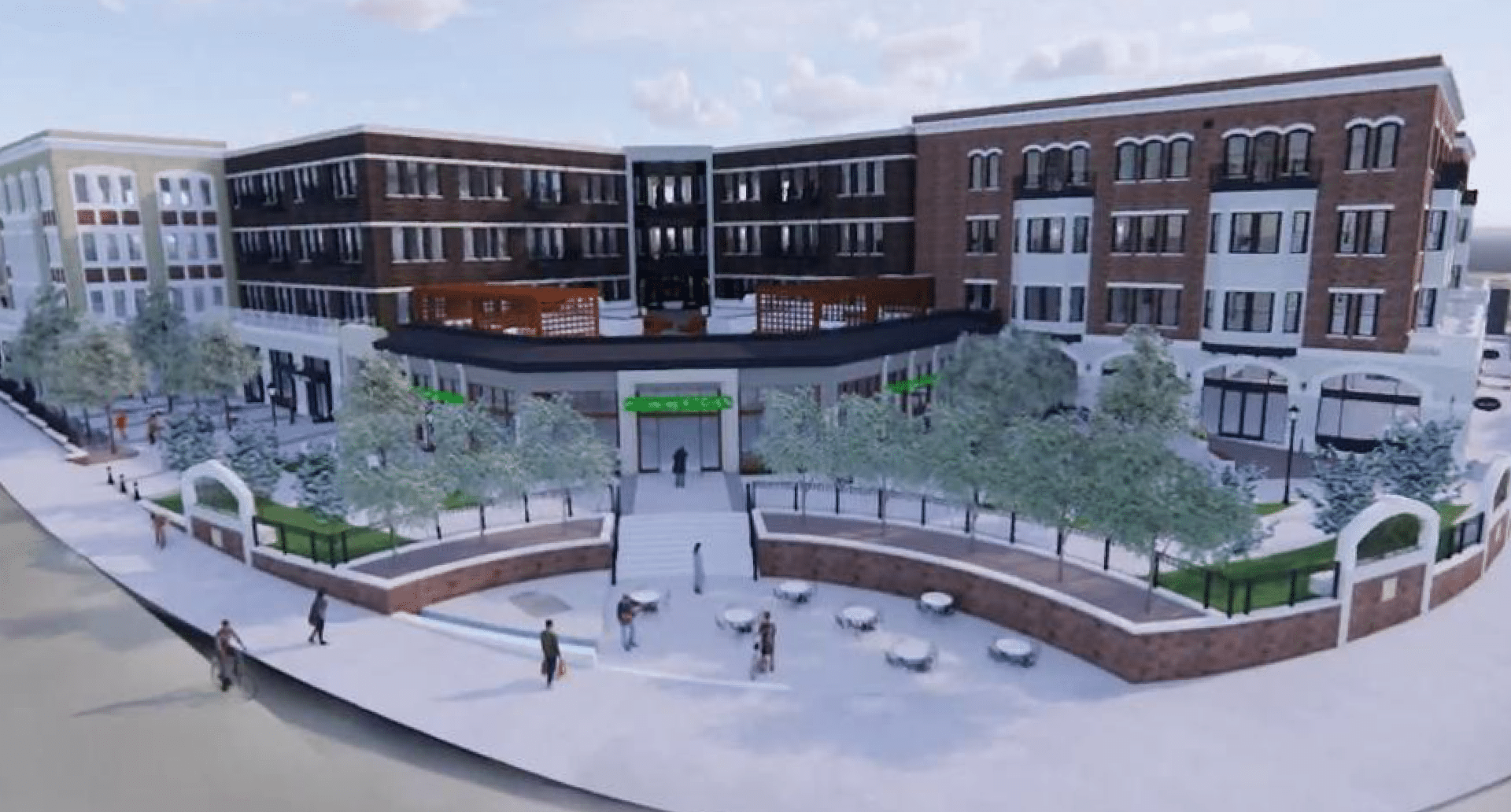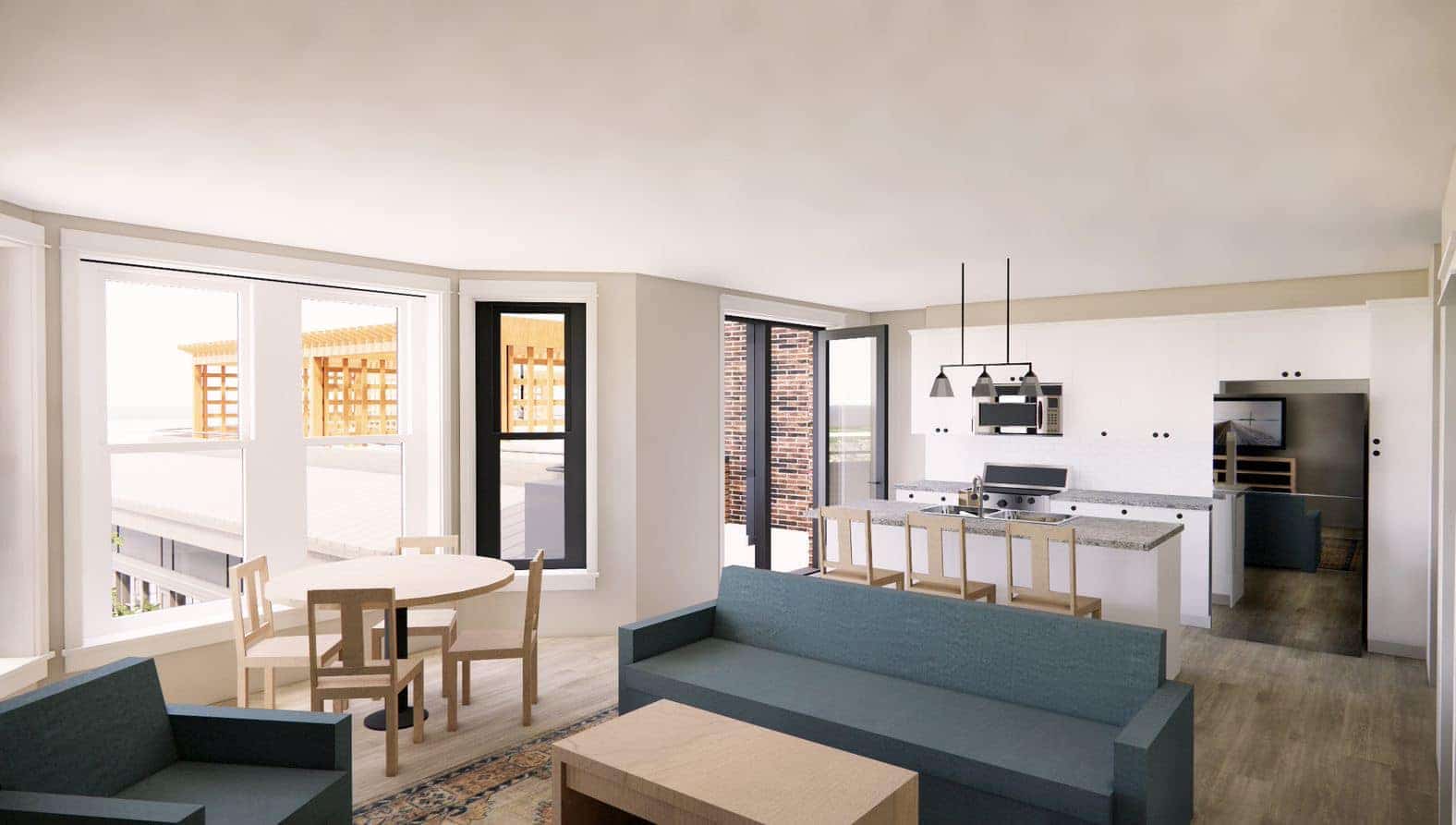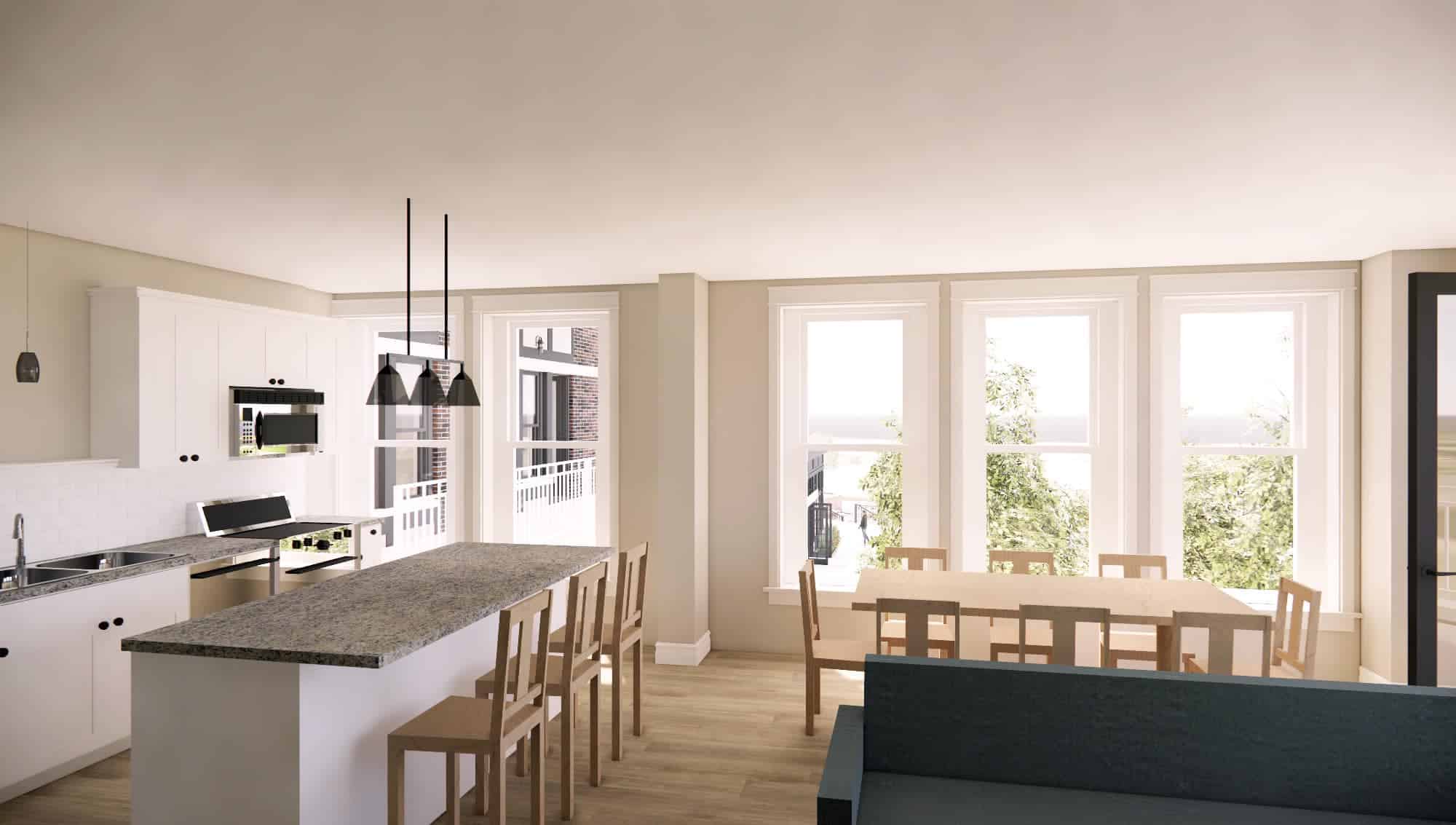How this developer is revitalizing a historic corner in Alexandria
When Rob and Ted Thompson were approached about developing the block at the heart of Alexandria, they knew it needed something special. That’s when Alexandria’s new “Rune” was born.

The busiest corner in Alexandria has been many things over the years: A sprawling, iconic mansion, a gas station, a funeral home. But ever since the abrupt closure of the beloved Bello Cucina restaurant in 2017, it’s been a hole in the heart of town, despite efforts to revitalize it.
“We’d seen a couple attempts to develop that property,” said Rob Thompson, president of C.I. Construction, but none had panned out.
Eventually, the owner of the property approached the team at C.I. Construction, a fourth-generation local development company run by father and son Rob and Ted Thompson.
Go big or go home.
Rob and Ted saw the potential, but they believed that location deserved even bigger thinking.
“We put a study together and hired an architect who was good with this type of project in a downtown area. That’s how it started,” says Rob.
Before long, The Rune was born: a 72-unit, high-end apartment, with a rooftop patio and street-level shops and offices. When it’s finished in 2024, The Rune will be the largest private construction project in Douglas County history.
Building for the whole community
The feasibility study showed what Alexandrians already know: the rental market is packed.
It also showed a strong demand in the 55-year-old and up demographic, but the Thompsons were clear: They didn’t want to limit The Rune to one age group, especially in this prime downtown space.
“We felt like we could create a vibrant community that would be attractive to not only the over-50 crowd,” says Rob, “but also to young professionals. There are a lot of millennials moving back who aren’t buying houses, but who are taking advantage of the activities downtown, like the boat museum, the Copper Trail Brewery, the hiking and bike trails, and the restaurants.”

The Thompsons were clear: They didn’t want to limit The Rune to one age group, especially in this prime downtown space.

Retaining the historic feel
Rob and his team were also committed to maintaining the charm and historic integrity of downtown Alexandria. They wanted something that felt authentic, and they invested extra to make it happen.
“We’re using older brick and materials that were used in some of the banks and existing buildings that are almost a hundred years old,” says Rob. “We’re incorporating those materials so this building looks like it’s been there for a hundred years.”
“It was important for us to make it feel like it’s been there,” says Ted. “So if you look at some of the trim inside, and some of the flooring, you’ll definitely get a sense that it’s a nod to the history.”
Not easy—but worth the effort
Any project this size takes time, but this one has faced a slew of extra challenges.
First there was the permitting and monitoring from the Minnesota Pollution Control Agency, given the former gas station on the site. Then there was COVID. And the worst? “The supply chain was totally unpredictable,” says Rob.
Fortunately, the project got a boost from the Alexandria Area Economic Development Commission, which helped C.I. Construction secure tax increment financing from the city of Alexandria, as well as a $350,000 deep matching grant to help offset the infrastructure costs, which includes capturing and treating all the rainwater runoff.
“If you’re someone who hasn’t been to Alexandria in the last few years, you’re going to come in and say, ‘Wow!’”
Ted Thompson
Making downtown better than ever
Now that The Rune is entering its final stages, excitement is building. There’s already been a “significant number of verbal commitments” from people and businesses excited to move in.
“If you’re someone who hasn’t been to Alexandria in the last few years, you’re going to come in and say, ‘Wow!’” says Ted. “It just creates this energy. I think it’s going to be awesome for all the downtown businesses.”
“We’re changing not only the landscape downtown,” says Rob, “but we’re also changing the economics of living downtown. In the long term, I think it will stimulate a lot of downtown improvements.”
“We’re grateful Rob and Ted took the risks they did,” says Nicole Fernholz, executive director of the AAEDC, “and I’m proud that we could help them along the way.”
